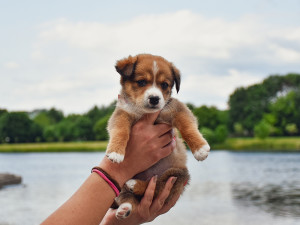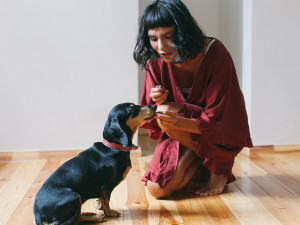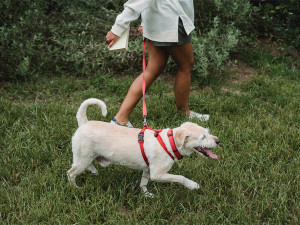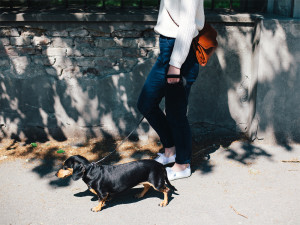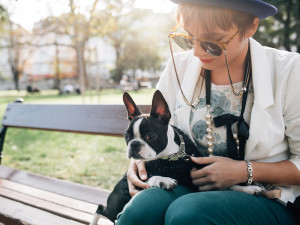Here’s the Potty Training Game Plan You’ve Been Waiting For
Seven tips you’ll want to pay attention to.
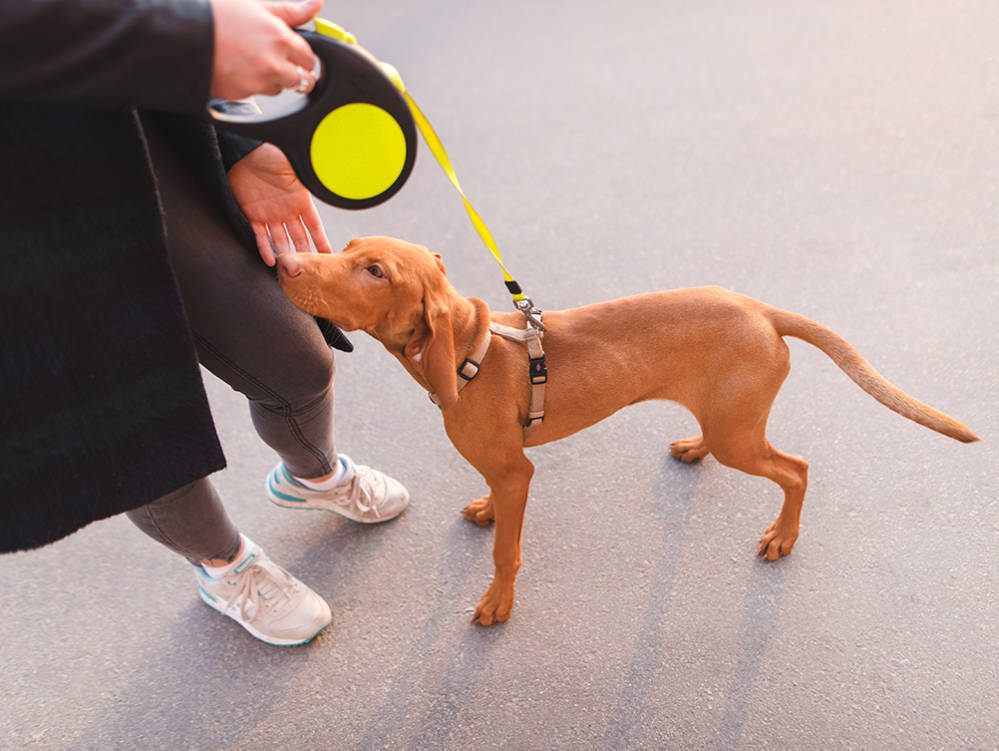
share article

Your pet wants you to read our newsletter. (Then give them a treat.)
It’s probably the first trick any dog ever learns: where to pee and when. It’s also a task that any new parent will urgently try to get right. That is, if you prefer not to step in a pee puddle just because you’ve turned your back for a millisecond. Potty training dogs can (and should) start immediately after you get them home, according to Lauren Novack, certified dog behavior consultant at Behavior Vetsopens in a new tab in NYC.
You may have already attempted a start, but after a few accidents, you might be wondering, Uh, how long is this gonna take? Don’t worry: You won’t be on your knees with paper towels forever. Here, Novack’s pro tips on how to get you and your puppy on the same page — and quickly.
1. Designate a pee spot.
If you live in a ground-floor home, your backyard or a nearby tree works just fine. If you’re in a high-rise or walk-up apartment, making it down many flights of stairs on a regular basis may be too much to ask. A pee pad works well in that scenario, preferably placed near the door, so it’s an easier transition when your dog gets older and wants to signal you to go out. You can also look into a faux grass patchopens in a new tab with a drainage container if you have a patio area. The point is, you want a consistent spot that your puppy can associate with potty time.
2. Lead your puppy to their spot when it’s time to pee.
Most puppies will need to go out when they first wake up in the morning and after they eat — at least — so get in the habit of taking them out during prime time. And every hour while you’re at it. Seems like a lot, we know. In general, puppies can hold their bladder equal to the number of months old they are, so a two-month-old puppy can theoretically hold their bladder for two hours. (Don’t worry, they can hold it longer overnight when they’re sleeping.) But just because they can doesn’t mean they should. Take your puppy for a pee break every hour for the first week or so they’re in your home. This allows you to hopefully catch them before they have an accident. Because who wants to get mad at a puppy? Literally no one.
3. Take note every time your pup pees or poops.
While taking your puppy out every hour is a pretty reliable preventive measure, it’s even better if you record their schedule. By writing it down during that first week and beyond, you can cut back how often you need to take your puppy out because you’ll have a clearer picture of when they actually need to go.
4. Pay attention to outlier circumstances.
Even if your puppy is consistent in some ways, certain activities can make them need to pee or poop outside of their usual routine, like after playtime or a training session. If you’re following a schedule but an accident still happens, consider what your puppy was (or you were) doing just beforehand. Did they just master the “sit” command…after consuming a dozen treats? Or, admit it, did a work email delay a scheduled potty break?
5. Limit your puppy’s real estate by crate training.
It takes time for a new puppy to learn the house rules, including where it is and isn’t OK to poop. To keep them from getting in too much trouble, veterinarians and behavior experts often recommend crate trainingopens in a new tab. Puppies naturally don’t like to go to the bathroom where they sleep, and cratesopens in a new tab are small enough that they associate the entire crate as their sleeping area. Rather than finding a quiet corner of your living room to pee, they’re more likely to hold their bladder until their next scheduled break when crated. Of course, you’ll want to make sure they’ve emptied their bladder first.
6. When your puppy has an accident, ignore it.
Some of us grew up with the idea that when a puppy has an accident, you should “rub their nose in it.” But that’s actually not what you should do at all. In fact, it can backfire. Your puppy will be too intimidated to pee in front of you for fear of being scolded — which, needless to say, is a real problem if you’re trying to teach them to go when you take them out on walks. So when they have an accident, record it, clean it up with an enzymatic cleaner, and figure out how the misstep happened.
7. As with all things in dog training, be patient.
It can take anywhere from four to six months to fully potty train a puppy, sometimes longer (sorry). Smaller breeds can take the longest since they have smaller bladders and need to pee more often. But that doesn’t mean you’ll be dealing with daily accidents that whole time — just that it’s a learning process for your pet and you’ll need to be super consistent in your training for a while.
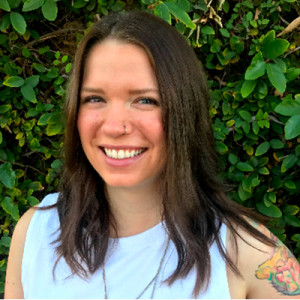
Colleen Stinchcombe
Colleen Stinchcombe lives near Seattle, WA, where she works as a writer, editor, and content strategist. Her two rescue pups wish she were a professional ball-thrower.
Related articles
![puppy jumping up on crate]() opens in a new tab
opens in a new tabGimme Shelter: The Best Dog Crates
Spend less time searching for your dog’s house than you do on Zillow.
![girl with blue hair starting puppy training with white dog]() opens in a new tab
opens in a new tabPuppy Training 101: How to Train a Puppy
You gotta start somewhere.
![A woman with a book in her hand walking her dog on a leash in a grassy park.]() opens in a new tab
opens in a new tab“Scent Walks”: Come On, All the Dogs Are Doing It
Why you should let your dog get all their sniffs out on a stroll.
![A woman sitting on a floor playing with her dogs.]() opens in a new tab
opens in a new tab10 Signs Your Dog Has Imprinted On You
This has nothing to do with a werewolf named Jacob in a series called Twilight, but here’s what it is all about.
![Woman walking her small black dog outside on leash.]()
Do Small Dogs Pee More Often?
Research shows that little dogs may feel the need to scent mark more frequently than big dogs.
![Stylish woman sitting on a bench with her Boston Terrier dog.]() opens in a new tab
opens in a new tabHere’s Why Your Dog Is Terrified of New People
And how to change this.
